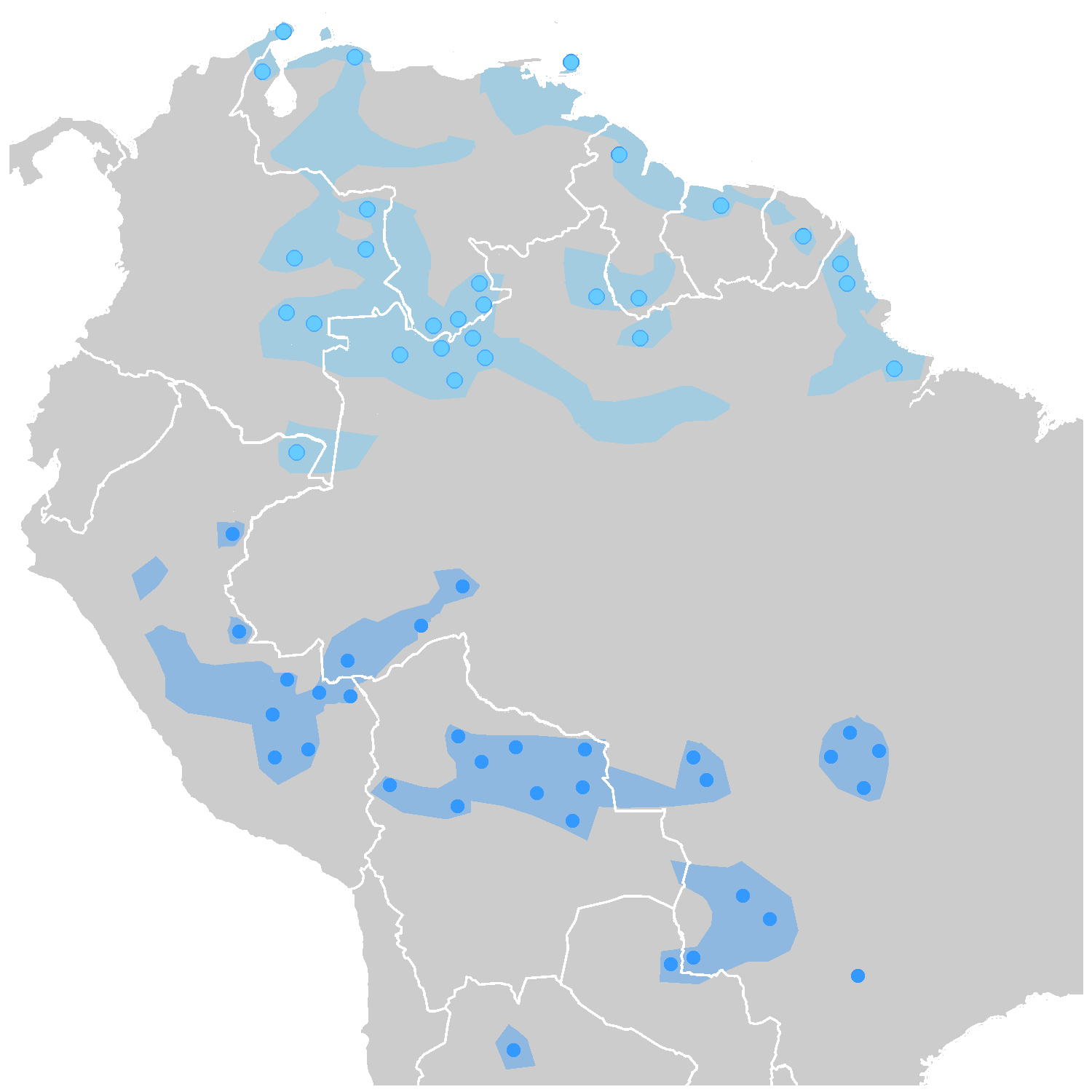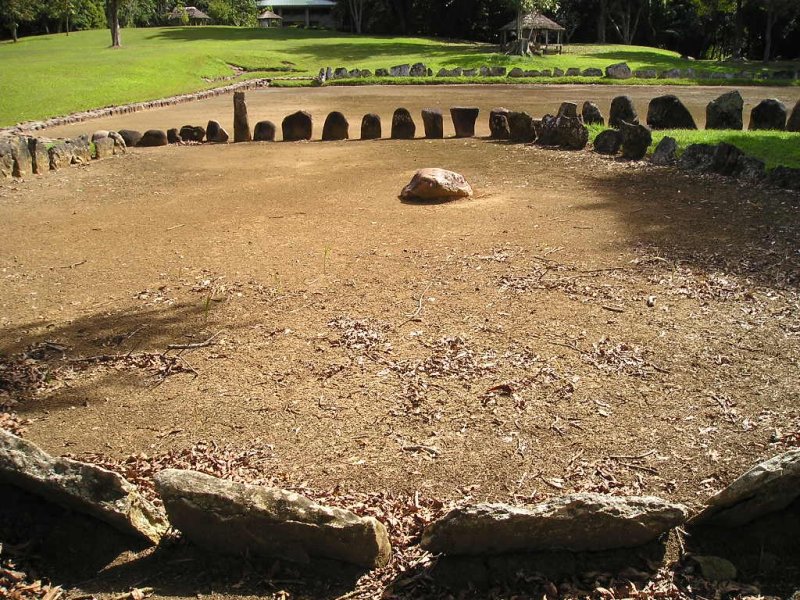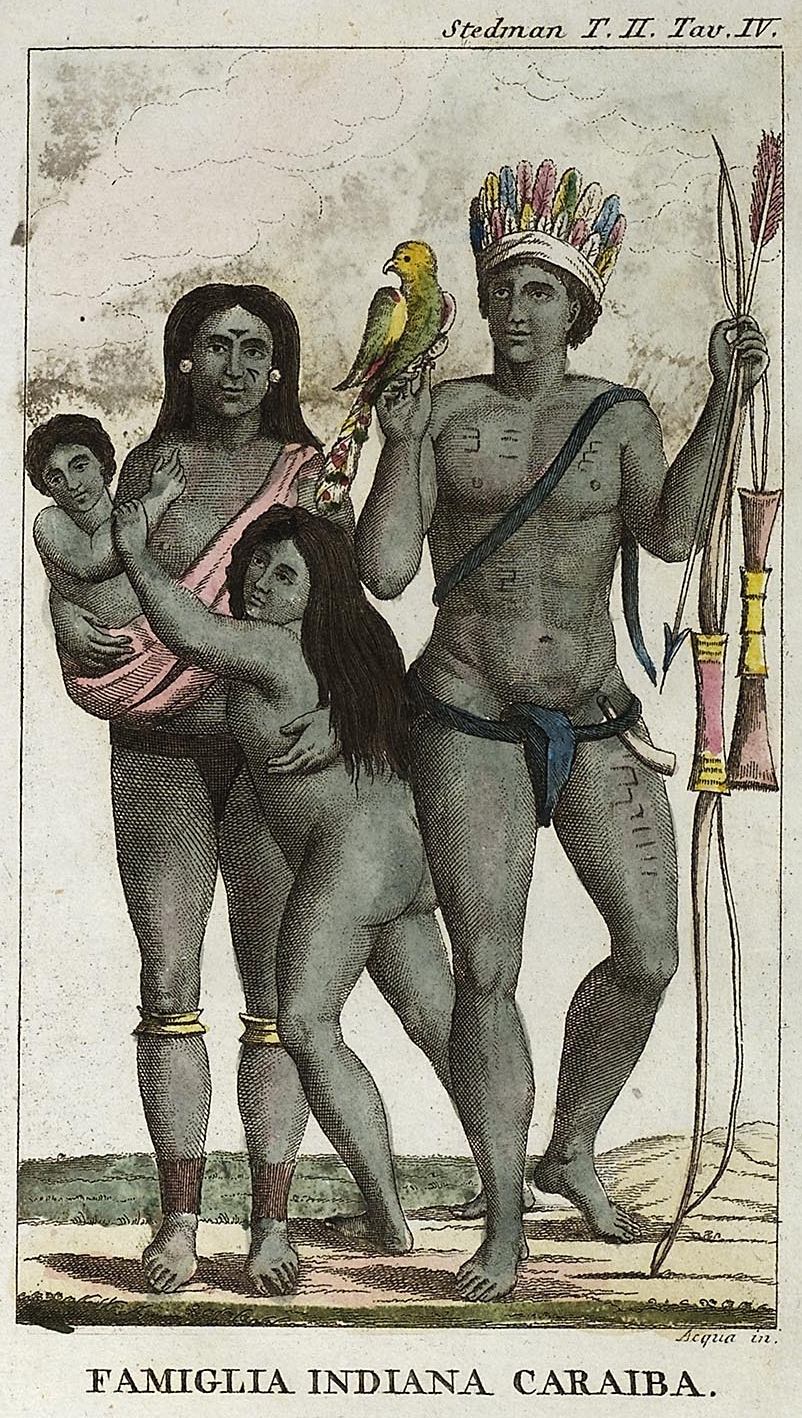|
Arawak
The Arawak are a group of Indigenous peoples of northern South America and of the Caribbean. The term "Arawak" has been applied at various times to different Indigenous groups, from the Lokono of South America to the Taíno (Island Arawaks), who lived in the Greater Antilles and northern Lesser Antilles in the Caribbean. All these groups spoke related Arawakan languages. Name Early Spanish explorers and administrators used the terms ''Arawak'' and '' Caribs'' to distinguish the peoples of the Caribbean, with ''Carib'' reserved for Indigenous groups that they considered hostile and ''Arawak'' for groups that they considered friendly. In 1871, ethnologist Daniel Garrison Brinton proposed calling the Caribbean populace "Island Arawak" because of their cultural and linguistic similarities with the mainland Arawak. Subsequent scholars shortened this convention to "Arawak", creating confusion between the island and mainland groups. In the 20th century, scholars such as Irving Ro ... [...More Info...] [...Related Items...] OR: [Wikipedia] [Google] [Baidu] |
Arawakan Languages
Arawakan (''Arahuacan, Maipuran Arawakan, "mainstream" Arawakan, Arawakan proper''), also known as Maipurean (also ''Maipuran, Maipureano, Maipúre''), is a language family that developed among ancient Indigenous peoples in South America. Branches migrated to Central America and the Greater Antilles and Lesser Antilles in the Caribbean and the Atlantic, including what is now the Bahamas. Almost all present-day South American countries are known to have been home to speakers of Arawakan languages, the exceptions being Ecuador, Uruguay, and Chile. Maipurean may be related to other language families in a hypothetical Macro-Arawakan stock. Name The name ''Maipure'' was given to the family by Filippo S. Gilii in 1782, after the Maipure language of Venezuela, which he used as a basis of his comparisons. It was renamed after the culturally more important Arawak language a century later. The term ''Arawak'' took over, until its use was extended by North American scholars to the broad ... [...More Info...] [...Related Items...] OR: [Wikipedia] [Google] [Baidu] |
Arowak Village
The Arawak are a group of Indigenous peoples of northern South America and of the Caribbean. The term "Arawak" has been applied at various times to different Indigenous groups, from the Lokono of South America to the Taíno (Island Arawaks), who lived in the Greater Antilles and northern Lesser Antilles in the Caribbean. All these groups spoke related Arawakan languages. Name Early Spanish explorers and administrators used the terms ''Arawak'' and '' Caribs'' to distinguish the peoples of the Caribbean, with ''Carib'' reserved for Indigenous groups that they considered hostile and ''Arawak'' for groups that they considered friendly. In 1871, ethnologist Daniel Garrison Brinton proposed calling the Caribbean populace "Island Arawak" because of their cultural and linguistic similarities with the mainland Arawak. Subsequent scholars shortened this convention to "Arawak", creating confusion between the island and mainland groups. In the 20th century, scholars such as Irving Rous ... [...More Info...] [...Related Items...] OR: [Wikipedia] [Google] [Baidu] |
Arawak Language
Arawak (, ), also known as Lokono (Lokono Dian, literally "people's talk" by its speakers), is an Arawakan language spoken by the Lokono (Arawak) Indigenous peoples of South America in eastern Venezuela, Guyana, Trinidad and Tobago, Suriname, and French Guiana. It is the eponymous language of the Indigenous Arawakan language family. Lokono is an active–stative language. History Lokono is a critically endangered language. The Lokono language is most commonly spoken in South America. Some specific countries where this language is spoken include Guyana, Suriname, French Guiana, and Venezuela. The percentage of living fluent speakers with active knowledge of the language is estimated to be 5% of the ethnic population. There are small communities of semi-speakers who have varying degrees of comprehension and fluency in Lokono that keep the language alive. It is estimated that there are around 2,500 remaining speakers (including fluent and semi-fluent speakers). The decline in the ... [...More Info...] [...Related Items...] OR: [Wikipedia] [Google] [Baidu] |
Lokono
The Lokono or Arawak are an Arawak people native to northern coastal areas of South America. Today, approximately 10,000 Lokono live primarily along the coasts and rivers of Guyana, with smaller numbers in Venezuela, Trinidad and Tobago, Trinidad,Suriname, French Guiana. They speak the Arawak language, the eponymous language of the Arawakan languages, Arawakan language family, as well as various Guyanese Creole, Creole languages, and English language, English. Name The group historically self-identified and still identifies as 'Lokono-Arawak' (used by the semi-fluent speakers in the tribe), or simply as 'Arawak' (by non-speakers of the native tongue within the tribe), and strictly as 'Lokono' by tribal members who are still fluent in the language, because in their own language they call themselves 'Lokono' meaning 'many people' (of their particular tribe), with 'Lokobe' meaning 'some people' (of their particular tribe), 'Loko' means 'one person' (of their particular tribe) as we ... [...More Info...] [...Related Items...] OR: [Wikipedia] [Google] [Baidu] |
Taíno
The Taíno are the Indigenous peoples of the Caribbean, Indigenous peoples of the Greater Antilles and surrounding islands. At the time of European contact in the late 15th century, they were the principal inhabitants of most of what is now The Bahamas, Cuba, the Dominican Republic, Haiti, Jamaica, Puerto Rico, and the northern Lesser Antilles. The Lucayan people, Lucayan branch of the Taíno were the first New World peoples encountered by Christopher Columbus, in the Lucayan Archipelago, Bahama Archipelago on October 12, 1492. The Taíno historically spoke an Arawakan languages, Arawakan language. Granberry and Vescelius (2004) recognized two varieties of the Taino language: "Classical Taino", spoken in Puerto Rico and most of Hispaniola, and "Ciboney Taino", spoken in the Bahamas, most of Cuba, western Hispaniola, and Jamaica. They lived in agricultural societies ruled by caciques with fixed settlements and a Matrilineality, matrilineal system of kinship and inheritance. Taíno ... [...More Info...] [...Related Items...] OR: [Wikipedia] [Google] [Baidu] |
Suriname
Suriname, officially the Republic of Suriname, is a country in northern South America, also considered as part of the Caribbean and the West Indies. It is a developing country with a Human Development Index, high level of human development; its economy of Suriname, economy is heavily dependent on its abundant Natural resource, natural resources, namely bauxite, gold, petroleum, and Agriculture, agricultural products. Suriname is a member of the Caribbean Community (CARICOM), the United Nations, the Organisation of Islamic Cooperation and the Organization of American States. Situated Tropics, slightly north of the equator, over 90% of its territory is covered by rainforest, List of countries by forest area (percentage), the highest proportion of forest cover in the world. Borders of Suriname, Suriname is bordered by the Atlantic Ocean to the north, French Guiana to the east, Guyana to the west, and Brazil to the south. It is List of South American countries by area, the smalles ... [...More Info...] [...Related Items...] OR: [Wikipedia] [Google] [Baidu] |
Kalinago
The Kalinago, also called Island Caribs or simply Caribs, are an Indigenous people of the Lesser Antilles in the Caribbean. They may have been related to the Mainland Caribs (Kalina) of South America, but they spoke an unrelated language known as Kalinago or Island Carib. They also spoke a pidgin language associated with the Mainland Caribs. At the time of Spanish contact, the Kalinago were one of the dominant groups in the Caribbean (the name of which is derived from "Carib", as the Kalinago were once called). They lived throughout north-eastern South America, Trinidad and Tobago, Barbados, the Windward Islands, Dominica, and possibly the southern Leeward Islands. Historically, it was thought their ancestors were mainland peoples who had conquered the islands from their previous inhabitants, the Igneri. However, linguistic and archaeological evidence contradicts the notion of a mass emigration and conquest; the Kalinago language appears not to have been Cariban, but like ... [...More Info...] [...Related Items...] OR: [Wikipedia] [Google] [Baidu] |
Trinidad And Tobago
Trinidad and Tobago, officially the Republic of Trinidad and Tobago, is the southernmost island country in the Caribbean, comprising the main islands of Trinidad and Tobago, along with several List of islands of Trinidad and Tobago, smaller islets. The capital city is Port of Spain, while its largest and most populous municipality is Chaguanas. Despite its proximity to South America, Trinidad and Tobago is generally considered to be part of the Caribbean. Trinidad and Tobago is located northeast off the coast of Venezuela, south of Grenada, and 288 kilometres (155 nautical miles) southwest of Barbados. Indigenous peoples of the Americas, Indigenous peoples inhabited Trinidad for centuries prior to Spanish Empire, Spanish colonization, following the arrival of Christopher Columbus in 1498. Spanish governor José María Chacón surrendered the island to a British fleet under Sir Ralph Abercromby's command in 1797. Trinidad and Tobago were ceded to Britain in 1802 under t ... [...More Info...] [...Related Items...] OR: [Wikipedia] [Google] [Baidu] |
Caribbean
The Caribbean ( , ; ; ; ) is a region in the middle of the Americas centered around the Caribbean Sea in the Atlantic Ocean, North Atlantic Ocean, mostly overlapping with the West Indies. Bordered by North America to the north, Central America to the west, and South America to the south, it comprises numerous List of Caribbean islands, islands, cays, islets, reefs, and banks. It includes the Lucayan Archipelago, Greater Antilles, and Lesser Antilles of the West Indies; the Quintana Roo Municipalities of Quintana Roo#Municipalities, islands and Districts of Belize#List, Belizean List of islands of Belize, islands of the Yucatán Peninsula; and the Bay Islands Department#Islands, Bay Islands, Miskito Cays, Archipelago of San Andrés, Providencia and Santa Catalina, Archipelago of San Andrés, Providencia, and Santa Catalina, Corn Islands, and San Blas Islands of Central America. It also includes the coastal areas on the Mainland, continental mainland of the Americas bordering the ... [...More Info...] [...Related Items...] OR: [Wikipedia] [Google] [Baidu] |
Guyana
Guyana, officially the Co-operative Republic of Guyana, is a country on the northern coast of South America, part of the historic British West Indies. entry "Guyana" Georgetown, Guyana, Georgetown is the capital of Guyana and is also the country's largest city. Guyana is bordered by the Atlantic Ocean to the north, Brazil to the south and southwest, Venezuela to the west, and Suriname to the east. With a land area of , Guyana is the third-smallest sovereign state by area in mainland South America after Uruguay and Suriname, and is the List of South American countries by population, second-least populous sovereign state in South America after Suriname; it is also List of countries and dependencies by population density, one of the least densely populated countries on Earth. The official language of the country is English language, English, although a large part of the population is bilingual in English and the indigenous languages. It has a wide variety of natural habitats and ... [...More Info...] [...Related Items...] OR: [Wikipedia] [Google] [Baidu] |
Irving Rouse
Benjamin Irving Rouse (August 29, 1913 – February 24, 2006) was an American archaeologist on the faculty of Yale University best known for his work in the Greater and Lesser Antilles of the Caribbean, especially in Haiti. He also conducted fieldwork in Florida and Venezuela. He made major contributions to the development of archaeological theory, with a special emphasis on taxonomy and classification of archaeological materials and studies of human migration. Early life Rouse was born on August 29, 1913, in Rochester, New York, the son of Louise Gillespie (Bohachek) and Benjamin Irving Rouse. His maternal grandfather was Czech. His family had been in the plant nursery industry for nearly a century, and Ben (as he was known to family and friends) was planning on continuing in the family business when he enrolled at Yale University in 1930 as a plant science major. His father had also attended Yale as an undergraduate. Education Rouse began his academic career studying forestry an ... [...More Info...] [...Related Items...] OR: [Wikipedia] [Google] [Baidu] |
Indigenous Peoples Of The Americas
In the Americas, Indigenous peoples comprise the two continents' pre-Columbian inhabitants, as well as the ethnic groups that identify with them in the 15th century, as well as the ethnic groups that identify with the pre-Columbian population of the Americas as such. These populations exhibit significant diversity; some Indigenous peoples were historically hunter-gatherers, while others practiced agriculture and aquaculture. Various Indigenous societies developed complex social structures, including pre-contact monumental architecture, organized city, cities, city-states, chiefdoms, state (polity), states, monarchy, kingdoms, republics, confederation, confederacies, and empires. These societies possessed varying levels of knowledge in fields such as Pre-Columbian engineering in the Americas, engineering, Pre-Columbian architecture, architecture, mathematics, astronomy, History of writing, writing, physics, medicine, Pre-Columbian agriculture, agriculture, irrigation, geology, minin ... [...More Info...] [...Related Items...] OR: [Wikipedia] [Google] [Baidu] |






